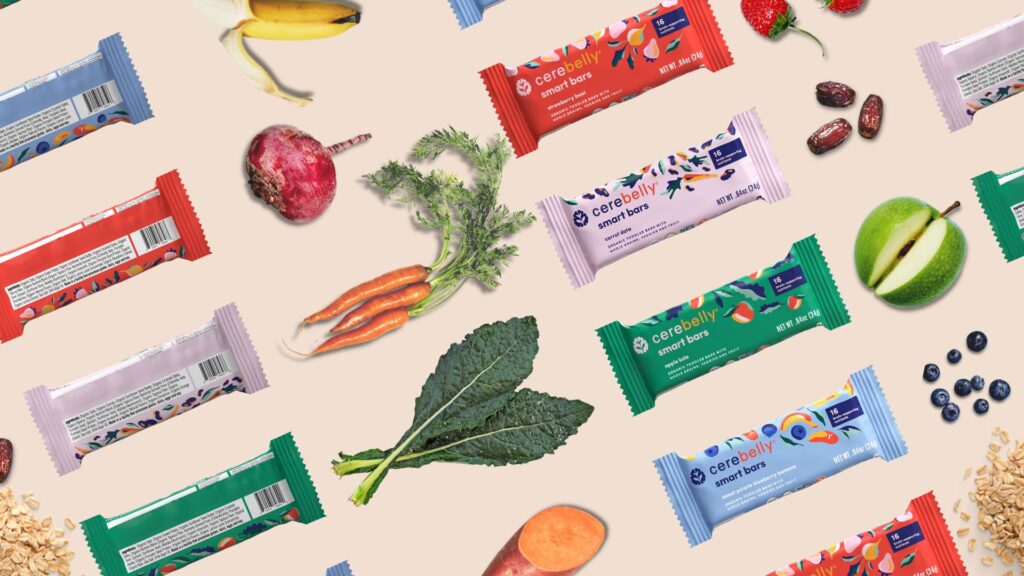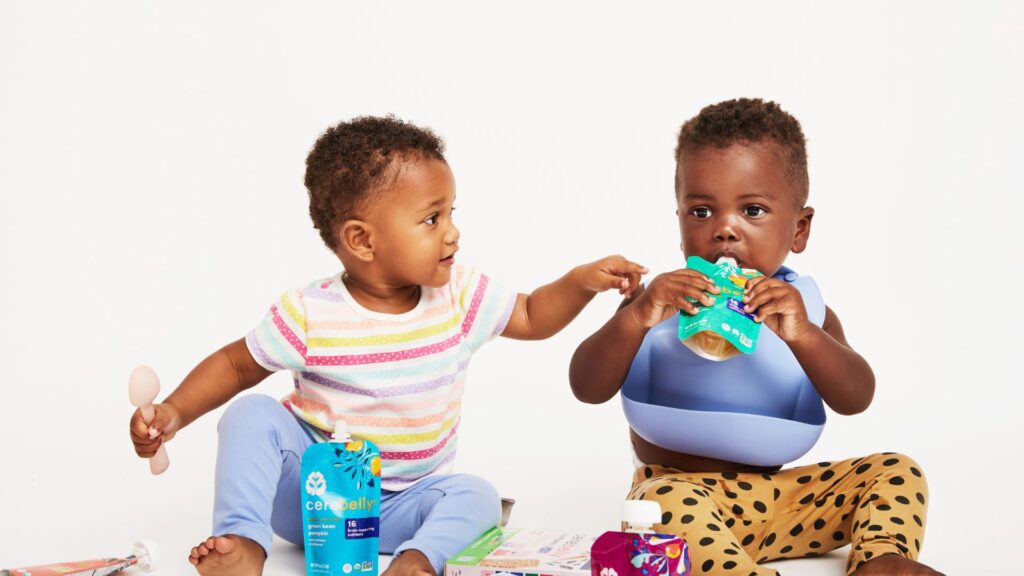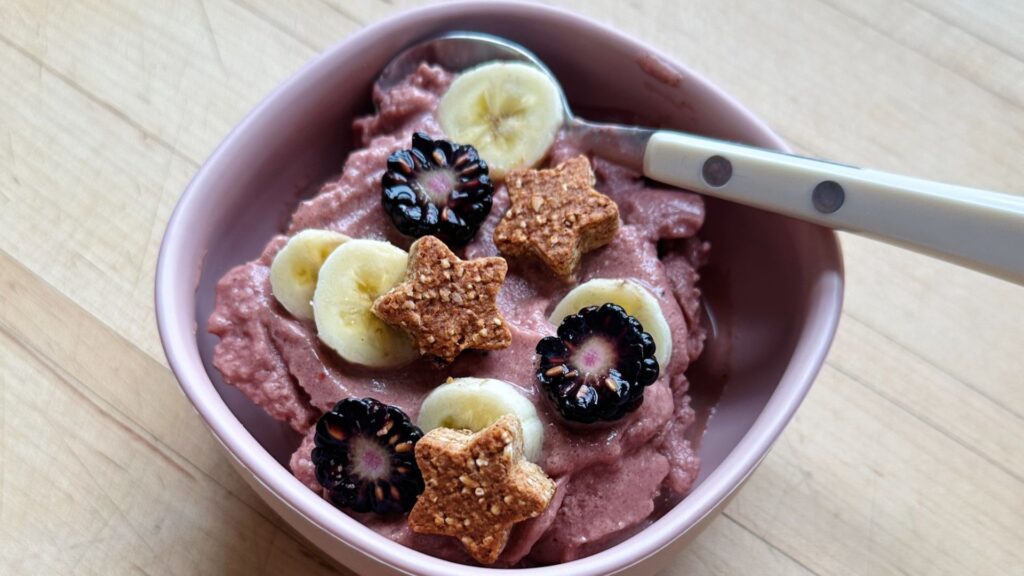How to choose the best snack bar for your toddler
It can be really challenging to find a healthy snack bar for toddlers. They need to be safe, they need to be delicious and they need to satisfy hungry tummies. But it’s also an opportunity to give our kids energy AND to actually nourish their brain and body.
As children are introduced to solids, and as their motor skills develop, different textures and flavors are important in guiding them to become foodies later in life. It’s why snack bars for toddlers are a natural next step. But not all snack bars are created equal.
This article will help you understand how to choose the best snack bar for your toddler

1. Look for a toddler snack bar that has balanced nutrition
Nutrient dense veggies – for vitamins and minerals necessary for whole body growth. A vegetable should be listed in the first three ingredients in order for it to be a meaningful amount. Vegetables that have a deep hue, like dark green, orange, purple or red, have a high nutritional value.
NO added sugar – toddlers have no room in their diet for added sugar
Whole grains – for fiber and B vitamins
Speaking of fiber, look for a bar that has 3g of fiber or more, to support a healthy gut and digestion.
Healthy fats – for energy, brain development, and immune function
Protein – for strong muscles, growth and immune function
AND brain supporting nutrients like iron, zinc, iodine, selenium, vit E and choline.
-
- Iron – supports neurologic development and immune function
- Vit E – supports nerve function and protects cells from damage
source: Stacey Segal, RD

2. Look for a soft, chewy bar
A soft, chewy toddler bar has a few advantages.
First, a soft texture is easy on young gums. The textured consistency is great for learning to accept foods that are “less smooth.”
Second, a chewy toddler bar is way less messy than a crunchy or crumbly bar. This means you can take them on the go with ease.
A soft, chewy bar is also easier to break into pieces so you can start out by serving the bar in bites, and using it as an opportunity for your toddler to learn how to pick up pieces (fine motor skill learning happens even when eating).
3. Look for foods that keep toddlers full
Sometimes toddlers’ stomachs can seem like a never ending pit. And sometimes we’d like to spend less hours in our day going back to the pantry for snacks that (won’t) keep toddlers full.
Fiber and protein, along with healthy fats, will be your best friend when it comes to finding a bar that will keep your toddler full.
Feeding tip for baby breakfast bars
Breakfast is often a time when kids are particularly hungry (read: haven’t had snacks yet), so it’s a great time to pack in some nutrient-dense foods.
Building a balanced breakfast means including protein, fat, fiber AND important vitamins/minerals that are essential for growth and development. So if you’re looking for the best snack bar for your toddler to eat for breakfast, it needs to include these key nutrients.
We recommend pairing an oat bar that has at least 3g of fiber and protein with greek yogurt (for extra healthy fats and protein) and a fruit rich in vitamin C, like kiwi or mango.
Common Questions
Q&A with Stacey Segal, Registered Dietitian
At what age can my child eat a toddler snack bar?
Around 1 year of age is generally a good time to begin to introduce bars, but every child is different. Your child may be ready for a soft, chewy bar when they can stand with support, self-feed with fingers, and bite and chew a variety of textures.
note: We recommend that you speak with your pediatrician if you have any questions or concerns regarding when your baby, in particular, should begin to eat bars.
Can toddlers have protein bars?
We recommend a bar specifically formulated for toddlers because they contain an appropriate amount of protein relative to their daily requirements.
The protein RDA (recommended dietary allowance) is 13 grams/day. This total protein intake for the day should come from a variety of foods, not all from one snack bar. Toddlers will get protein from meals and milk too. For example, 1 egg has 6 grams protein.
Yes, it is very important for a toddler snack to contain protein, as it provides energy and helps with brain development; however, there is no health benefit for toddlers to have an excessive protein intake.

What snacks should toddlers avoid?
Avoid snacks that contain added sugar or artificial sweeteners.
what are the best tasting bars for picky eaters?
Picking a bar with vegetables in one of the first few ingredients can be a great way to make sure your picky eater gets the nutrients they need, even if they don’t eat everything on their plate that day. But a snack bar also needs to taste great and feel good on their new teeth and sensitive gums. Texture and taste go hand in hand. Soft, slightly chewy, veggie-first bars with a hint of fruit for sweetness checks all the boxes!

Cerebelly Smart Bars
Looking for a snack that won’t crumble all over your car or living room floor? Our toddler smart bars have a chewy texture that both parents and kids will love. Packed with wholesome ingredients like sweet potato, banana, blueberry, and carrot, they’re the ultimate veggie-first snack for your little ones. Most importantly, Cerebelly smart bars for toddlers provide 16 key brain-supporting nutrients your little one needs during each critical period of brain development as they grow.
Have more questions? Send us an email at support@cerebelly.com and we will be sure to get back to you!



